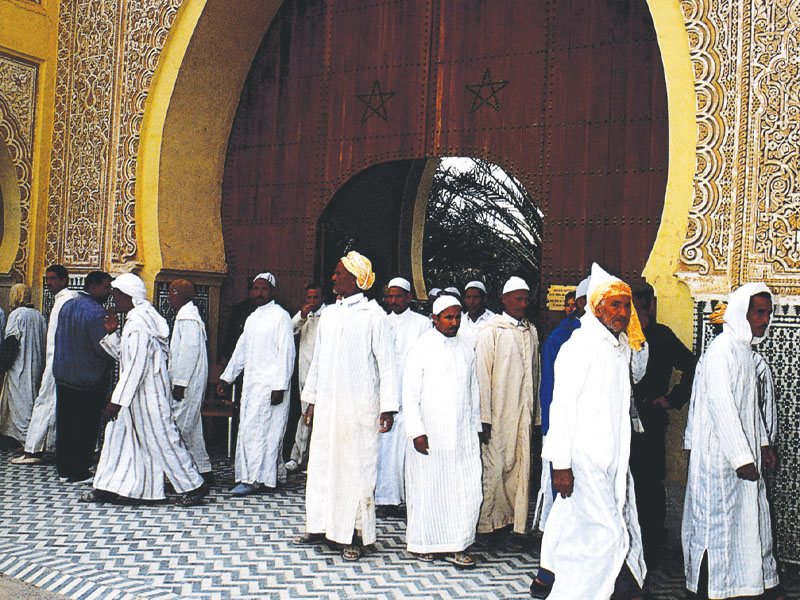Celebrations for the Birth of the Prophet
Issue 13

Al Zubayr Mihdad (Morocco)
This article focuses on the history of Maghreb’s celebrations of the birth of the Prophet (May Peace Be Upon Him) from the first celebrations in the Azfi era in Ceuta. These celebrations first became a deep-rooted tradition in Moroccan society during the Sadia period, resulting in a great legacy of poems in praise of the Prophet (MPBUH).

The Azfi family in Ceuta established the tradition of celebrating the Prophet’s birth to highlight Islamic identity and to teach people about the distinguishing features of the Islamic community in a cosmopolitan society that regularly saw celebrations of Christian and Jewish rituals and religious events.
The article analyses the structure of the prophetic praise poems, and discusses their themes and the traditions and rhythms used during the recitation of these poems in praise sessions; the article also discusses Sufism’s role in disseminating the music of the poems, and in preserving and developing the poems.
These poems include some poems of Malhun art, which is known among Moroccans as Al Dhikr invocation, in contrast to love poetry and other poems. Al Dhikr involves singing the Prophet’s praises and invocations that confer feelings of peace.

The man who sings the poems from memory is called Dhakkar. These songs can be best described as Wanasa, an Arabic word that describes the comfort that this noble art gives to the vocalists, the band members and the audience.
Poems are usually read in a tuneful manner that blends individual and group singing. The individual singing is used for the greater part of the poem, and it is performed by a vocalist of strong voice, good articulation, the ability to sing in a high voice and to modulate his breathing. Only the most skilled singers can change rhythms with each verse.
The article describes the musical instruments that accompany the recitations of poetry, differentiating between groups that use individual string, wind and percussion instruments and those that combine two or more instruments.
Percussion instruments play a vital role in the development of the rhythmic characteristics of songs. This is evident in the many percussion instruments that accompany singing and dancing, the drum being used mostly by Qasimiyyun, and the tambourine and Tas by Tuhamiyyun.

Then the article describes Sufi dancing, which ranges between gentle and vigorous movements and Sufi sects that use dance to express emotions.
Sufi sects consider religious dancing an effective tool to achieve Sufism’s aims. They consider dance the best way to warm hearts and touch consciences, and Sufi dance helps dancers to transcend everyday reality. Dance, invocations, singing and music are the cornerstones of Sufi rituals.
Sufi dance follows rules and traditions passed down by generations of Sufi men. The difference between Sufi sects is reflected in different movements; some sects shake, while others stamp their feet. The dance reaches a climax with appeals to Allah and repetitions of the Arabic word Madad; at this point the dancing is almost violent and voices sound almost suffocated.
The article concludes with a description of the Sale city candle show, which is part of Maghreb’s celebrations of the Prophet’s birth.







































































